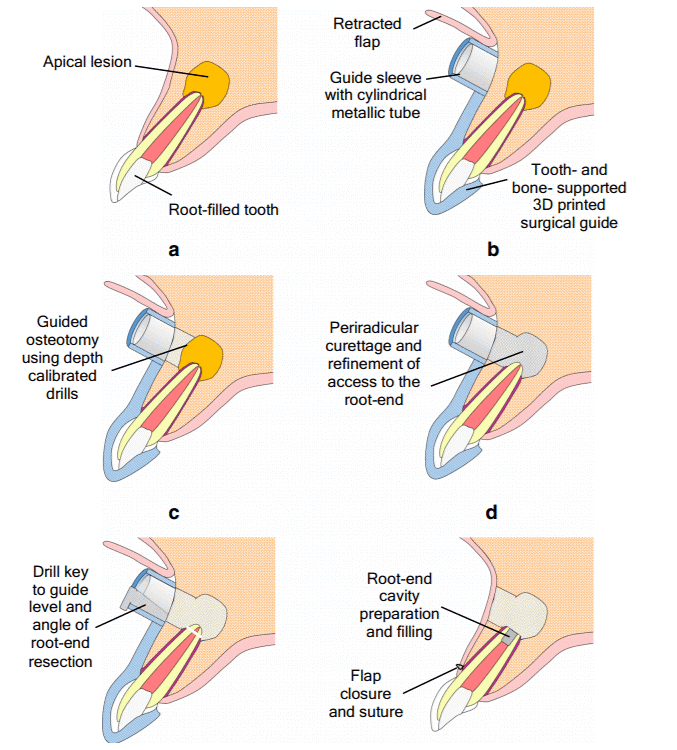-
Call Us Today
+91 868 649 1122
-
location
Telangana
APICOECTOMY
Our teeth are held in place by roots that expand into our jawbone. An apicoectomy is a minor surgery that evacuates the apex, or very tip of the tooth's root.
An apicoectomy, otherwise called root end surgery/procedure, may be essential if an infection develops or proceeds after a root canal. If this is recommended for you, it implies your tooth can't be saved by ordinary root canal treatment.
WHEN DOES ONE NEED AN APICOECTOMY?
Re-infection followed after Root Canal Treatment: In some cases even after precise root canal treatment, some infected tissue remains below the root for a chronic periapical infected tooth and causes tooth pain. The chronic infection below the tooth root cannot be removed through the routine re-Rct or RCT; hence we remove the base of the tooth infection surgically.
Little adjoining root branches:Roots of the teeth are incredibly complex and can contain numerous minor branches. If these minor branches can't be cleaned and fixed when the root canal treatment is performed, inflammation can continue.
Blocked root canal:At some times we can't adequately clean a root canal due to curved canals or calcified canals ,since it is obstructed by a cracked tooth record left behind from earlier root canal treatment. Infection can rapidly influence nearby teeth.
Limited or curved root canals: When the root canal is curvy, the endodontic instruments can't arrive at the root tip leading to improper removal of infected tissue causing peri apical infection.
WHAT IS THE PROCEDURE OF APICOECTOMY?
In the first place, local anesthesia is utilized to make you comfortable. During the treatment, a cut is made in the gum close to the tooth to uncover and dispose of any inflamed or infected tissue. Our doctor will likewise expose the tip of the tooth's root. The end of the root canal is sealed with a little retrograde filling. A couple of stitches are utilized to close the gum tissue and the bone develops around the end of the root over the next few months. Post-operative instructions to be followed to avoid complications. Swelling and numbness symptoms are common for couple of weeks following the procedure hence ice pack should be applied periodically for the initial 12 hours after a medical procedure.

FREQUENTLY ASKED QUESTIONS:
How would you stop daytime bruxism?
Train yourself not to clench or crush your teeth. If you notice that you grip or pound during the day, position the tip of your tongue between your teeth. Loosen up your jaw muscles around evening time by holding a warm washcloth against your cheek before your ear lobe.
Is bruxism serious?
If you have pain in your mouth, jaw, or neck from radiating to your teeth, you should meet your physician or dental specialist. Or else bruxism can spoil your oral and rest health, and a health expert can help to prevent more damage by this habit,
What does bruxism pain feel like?
Jaw pain can be from the muscles or joints and can feel over-worn, exhausted, firm, or pulsating. Cerebral pains can be toward the beginning of the day or night, consistent or fluctuating, and can extend from a slight dull agony to a serious headache. Cheeks can feel worn or sore when biting.
